When on a road trip in Oz, there are certain Australian icons
one not only hopes to see, but expects to see.
 Like classic Australian road signs not encountered in other parts of the world…
Like classic Australian road signs not encountered in other parts of the world…
…and their introduced farming livestock
And hints of an outback way of life reflected by little signs such as this ‘hutch’ placed on the roadside at drive-way’s end…
…where essentials can be deposited by passing services (if they’re not too far out of town) including the odd letter if they have a roadside mail delivery (RMD) address.
Then there’s the iconic turning, churning water windmills that creak and clank as they pump the outback’s precious liquid gold up to the surface to sustain the lives of farmed species unused to Australia’s dry conditions.
But… there’s nothing more iconic than the native kangaroo and emu, which holding up the Australian coat of arms are part of Australia’s national emblem.
No Australia road trip is complete without a kangaroo and/or emu sighting!
The above coat of arms has been in use in Australia since 1912.
The red kangaroo to the left, and emu to the right, support a central shield that depicts the badges of each modern Australian State ~
NSW, Victoria and Queensland (from left to right along the top line) and South Australia, Western Australia and Tasmania (along the bottom line)
The seven pointed ‘Commonwealth Star’ sitting above the shield represents the six states (in the shield), with the seventh point representing the combined Territories (NT & ACT).
We spotted these two kangaroos at Undara Lava Tubes on the Atherton Tablelands – Notice the joey feet sticking out of the pouch of the one on the left 🙂
There are over 60 different species of kangaroo ranging in size from 0.5kg (1 lb) to 90kg (200lbs).
This mother and joey were enjoying some shade, again at Undara Lava Tubes.
All kangaroos are macropods, meaning ‘great-footed’ and belong to the Macropodoidea family.
The Macropodoidea family includes kangaroos, wallabies, wallaroos, pademelons, tree-kangaroos and forest wallabies.
The Potoroinae (potoroid) family of kangaroos includes the smaller potoroo, bettong and rat-kangaroo.
The main difference between a kangaroo and a wallaby is it’s size.
This kangaroo was keeping an eye out while her joey took a drink from the creek at Innot Hot Springs, up on the Atherton Tablelands.
Kangaroos are herbivorous, eating a range of plant life. They are marsupials meaning the females give birth to a relatively immature young (just a few centimetres long), which crawls into her front pouch and attaches to one of her four teats where the young ‘joey’ is raised. When large enough to venture out, the young will still return to the pouch for nourishment, warmth and protection until mature enough to be totally independent.
Emus are the third largest bird in the world after the ostrich and cassowary, reaching up to 2 metres (6’6″). They are flightless.
When it comes to breeding the male and female make a ground nest of grass and twigs where the female lays between 5 and 20 eggs but then leaves the inncubation and rearing in its entirety to the male.
We spotted this emu and his chick north of Charter Towers, when we were heading up towards the Atherton Tablelands.
The male emu will seldom leave the nest for 8 to 10 weeks during incubation, and after the chicks have hatched the young can remain with their father until they become sexually mature at about 18 months.
All photos above were taken on our recent road-trip from the red centre to the Atherton Tablelands where we happily saw these beautiful kangaroos and emus!
Have you seen Australia’s emblematic natives in the wild?
Do tell in the comments below 🙂
Photos: by Linda Fairbairn
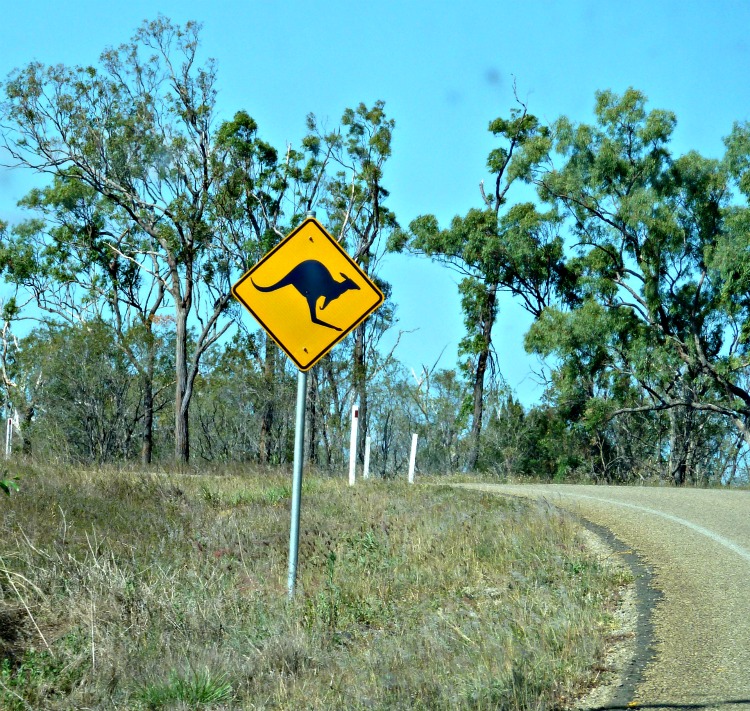


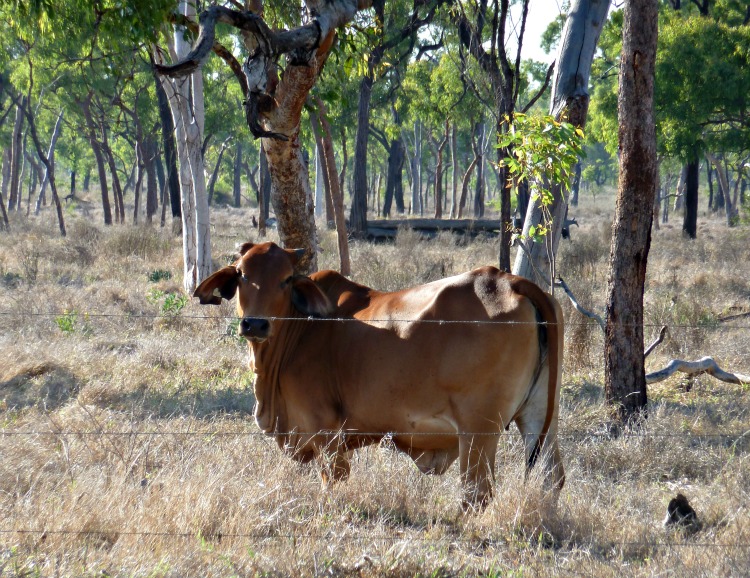

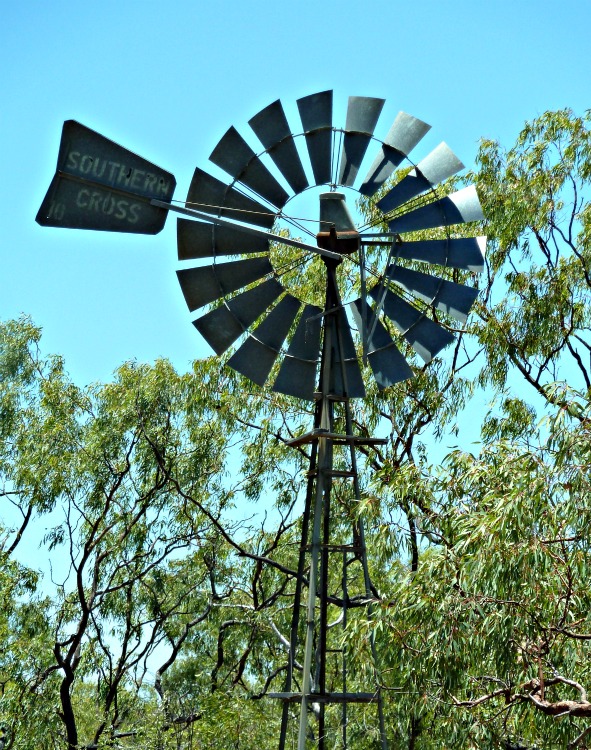
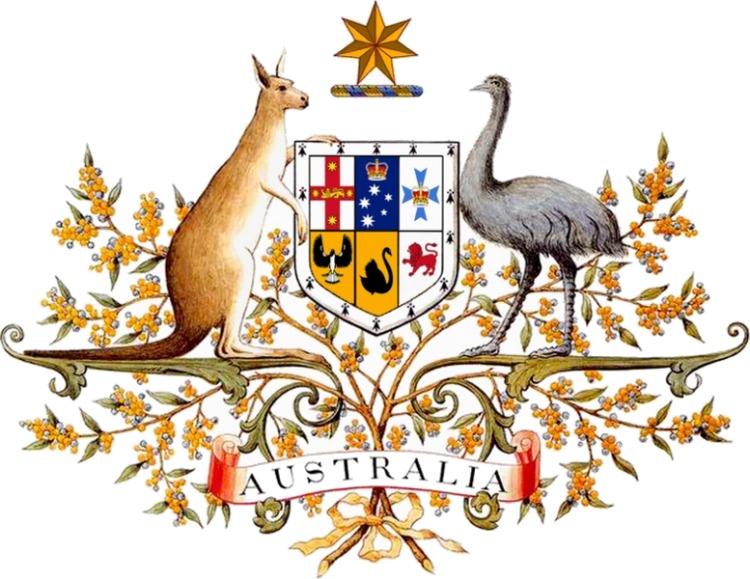



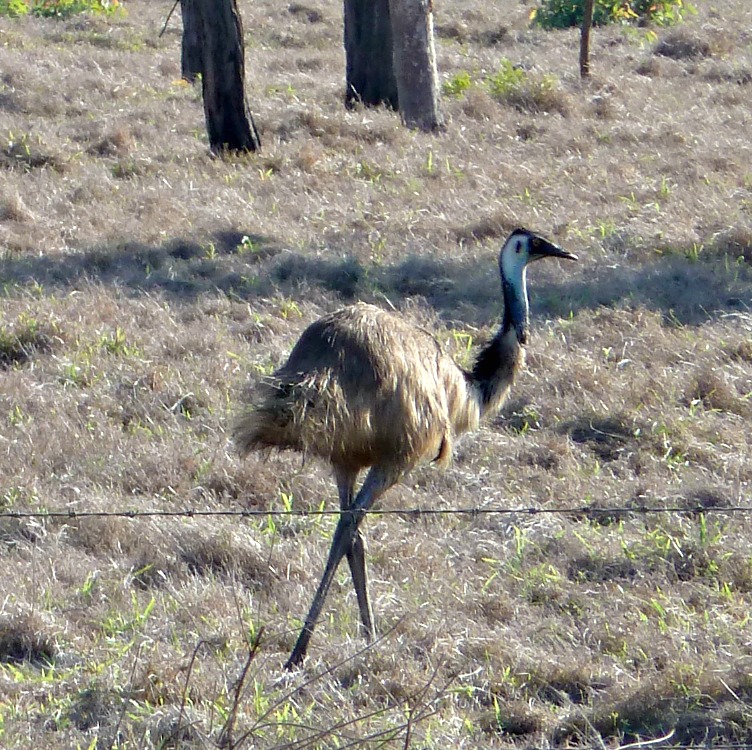



It’s such a delight to leave the highways and travel along the quieter roads.
Who knows what surprises are in store?
Kangaroos, wallabies, skinks and goannas
sunning themselves as they watch you go by
Brightly coloured birds feeding by the wayside
or screeching through the blue of the sky
Emus streaking across the plains.
And at night, what are those eyes shining in the dark?
Perhaps a bunyip… or just a solitary cow
a possum scurrying up a tree
a bandicoot, bilby or paddymelon?
There’s always something to see
as you travel the highways and byways of this amazing land.
What a simply stupendous comment Desolie –
I don’t think I’ve ever had one so exquisitely written 🙂
Thank you!
Dang! I’ve lived here for 47 years, and you just gave me a fine lesson in local critters. Thanks for the learnings, Linda! 🙂 Thanks also to @DesoliePage for the Twitter heads up. Best regards, P. 🙂
Pleased you learnt something Paul haha
And worth visiting this post just for Desolie’s poetic comment 🙂
Ah – but WHY were those two animals chosen for the Coat of Arms? Apparently because neither of them can walk (hop? run??) backwards!!!
Sign spotting is a favourite pasttime – as is wildlife spotting – but I now know a little more about what I’m looking at!!
Red Nomad OZ recently posted..7 Random Alpine Adventures – Bright, Victoria
I had heard that theory that because neither animal can move backward, only forward, they’d appropriately represent progress of a nation –
But I’ve since read that kangaroos and emus can move backwards, its just that they infrequently do so!
Can’t beat a good sign 😉
Pingback: How much does it Cost to Travel from Uluru to Cairns?
I enjoyed this post and agree that an Australian road trip doesn’t feel complete without a kangaroo or emu sighting!
And there’s nothing like being stuck going 5km/hour behind a family of emus on a narrow dirt track. So infuriating but funny at the same time.
The beauty of the Aussie outback –
Being made to slow down to move at its pace! 😉
I love our Aussie icons. Come to think of it I haven’t seen an Emu in a while!
I think that means its time to hit the road again Jan LOL 😀
Wow we’d love to see roos but weren’t lucky at all during our time in Sydney! Thanks for the tips, we’ll keep an eye out during our Aus adventure next year.
Safe travels to you.
There are so many wonderfully diverse animals to be seen in Oz –
Ww are currently really enjoying the wombats in Tasmania 😀
I love hitten’ the road just to see em’ emus and those jumping kangarooooos !!
Me and my older siblings love going on road trips just to see them !
Can’t beat it, can you?!! 😉